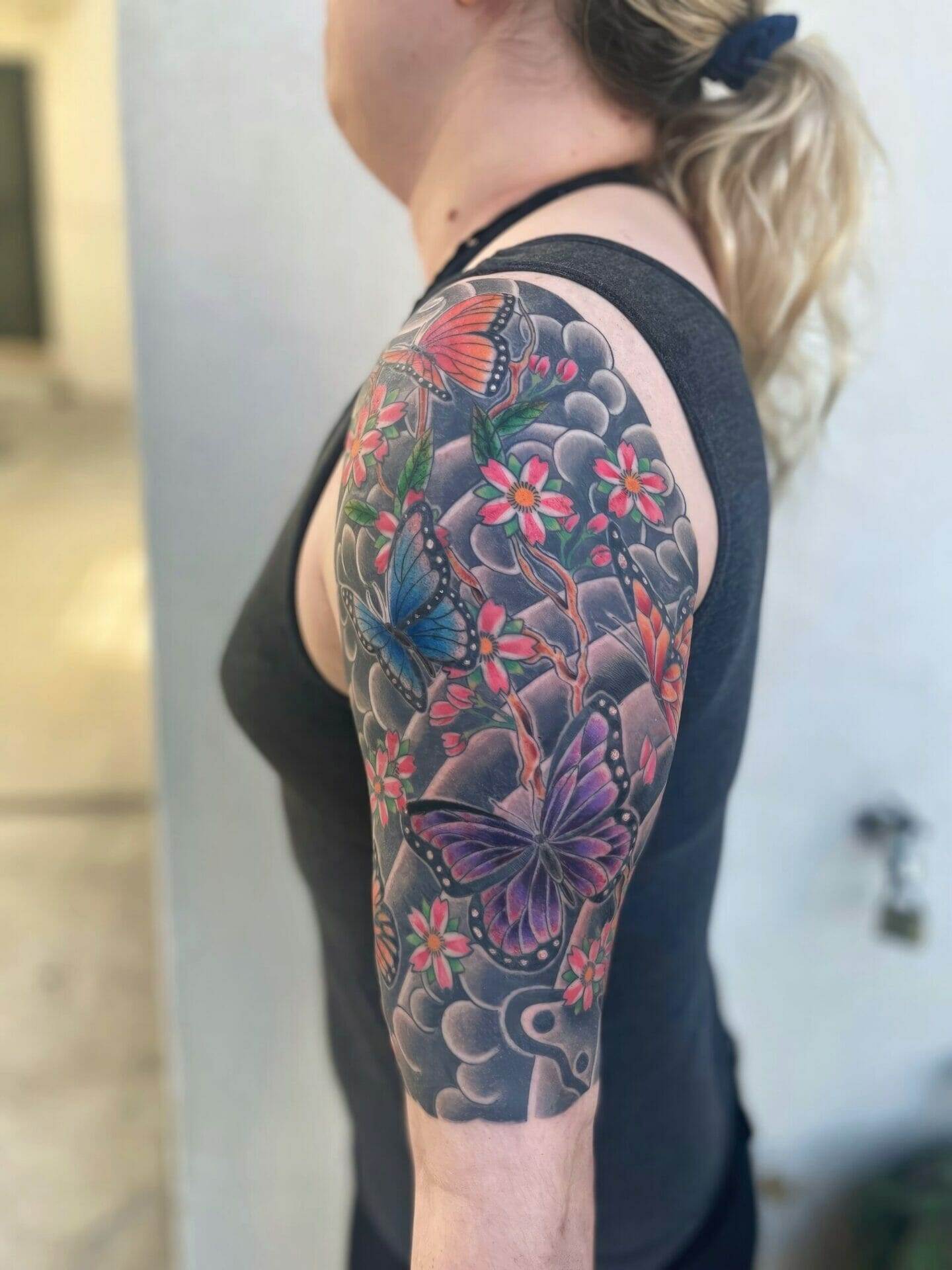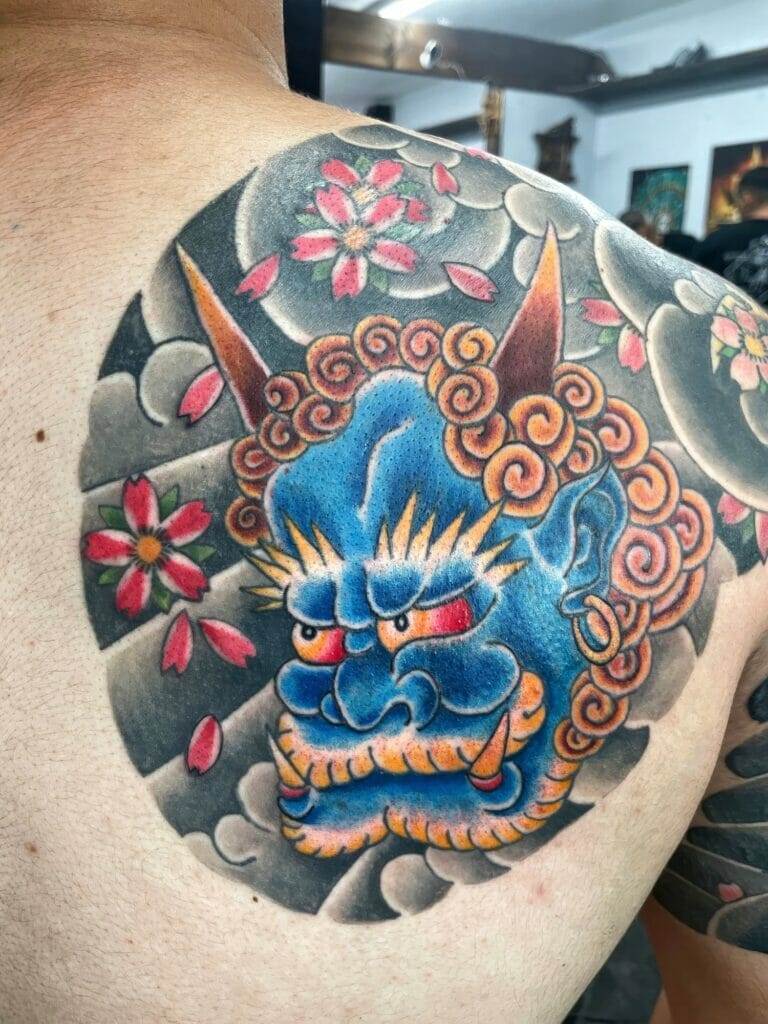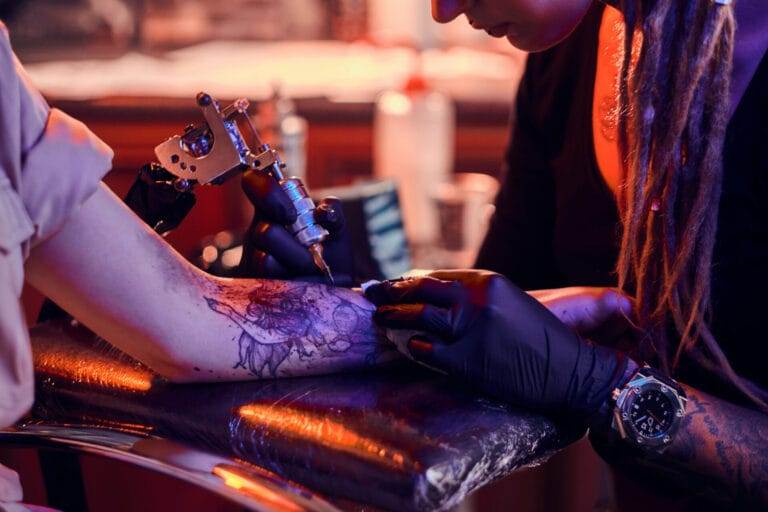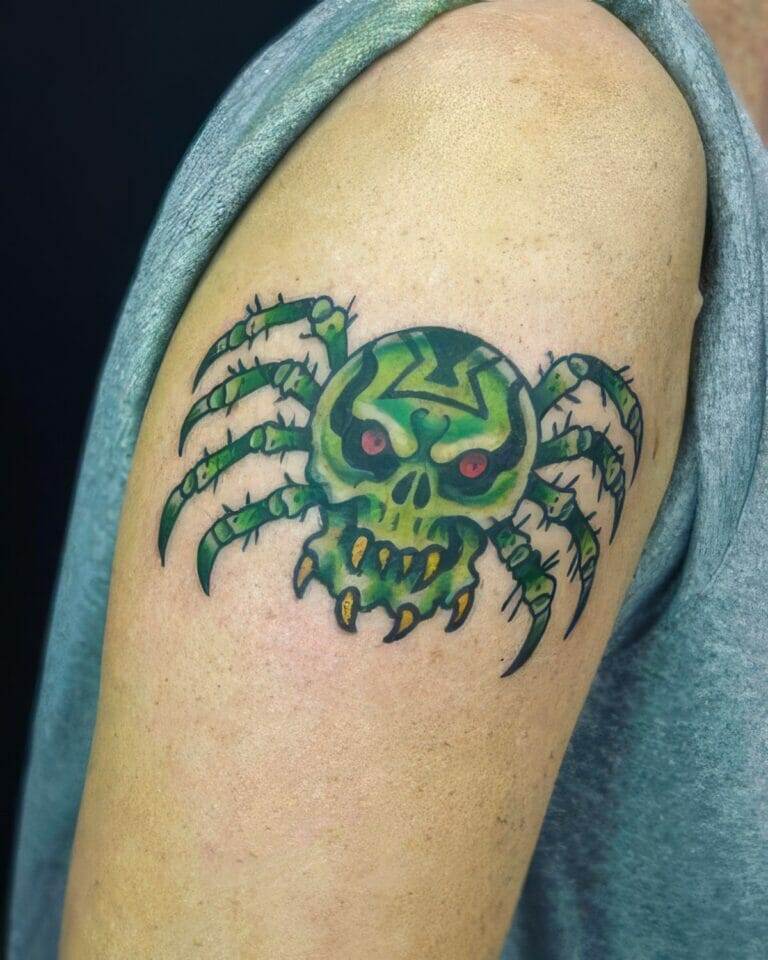
Traditional Japanese tattoos, also known as irezumi, have a rich history and cultural significance in Japan. These tattoos are characterized by their vibrant colors, intricate designs, and the use of traditional Japanese motifs. They have been a part of Japanese culture for centuries and hold deep meaning for those who wear them.
In Japanese society, tattoos were traditionally associated with the criminal underworld and were seen as a mark of dishonor. However, in recent years, attitudes towards tattoos have shifted, and they are now more widely accepted as a form of self-expression. Traditional Japanese tattoos have become popular not only in Japan but also around the world, with many people embracing the art form and its cultural significance.
The Historical Roots of Japanese Tattooing
Tattooing has a long history in Japan, dating back thousands of years. The practice can be traced back to the Jomon period (10,000 BCE – 300 BCE), where evidence of tattooed figurines has been found. These early tattoos were believed to have been used for spiritual and decorative purposes.
During the Edo period (1603-1868), tattooing became more prevalent among the working class. It was during this time that irezumi began to be associated with criminality, as it was often used to mark criminals as a form of punishment. However, despite its association with the criminal underworld, tattooing also gained popularity among commoners who saw it as a form of self-expression.
The Mythological Figures and Creatures Depicted in Traditional Japanese Tattoos
Traditional Japanese tattoos often feature mythological figures and creatures that hold significant meaning in Japanese culture and mythology. Some of the most commonly depicted figures include dragons, koi fish, cherry blossoms, samurai, geisha, and oni.
Dragons are one of the most popular motifs in traditional Japanese tattoos. In Japanese culture, dragons are seen as powerful and benevolent creatures that bring good luck and protection. They are often depicted with a pearl, which symbolizes wisdom and enlightenment.
Koi fish are another common motif in Japanese tattoo art. These fish are associated with perseverance and determination, as they are known for their ability to swim upstream against strong currents. Koi fish tattoos often represent overcoming adversity and achieving success.
Cherry blossoms, or sakura, are a symbol of beauty and the transient nature of life in Japanese culture. They represent the fleeting nature of life and the importance of living in the present moment. Cherry blossom tattoos are often used to symbolize the beauty and impermanence of life.
The Symbolism of Dragons in Japanese Tattoos
Dragons hold significant symbolism in Japanese culture. They are seen as powerful and benevolent creatures that bring good luck and protection. In Japanese mythology, dragons are associated with water, which is believed to be the source of life.
There are several different types of dragon tattoos, each with its own meaning. The Ryū dragon is a traditional Japanese dragon that is often depicted with three toes and a serpentine body. It is associated with water and is believed to have the power to control rain and bodies of water.
The Tatsu dragon is another popular motif in Japanese tattoo art. It is often depicted with four toes and is associated with the sky and the heavens. The Tatsu dragon is believed to have the power to control the weather and bring good fortune.
The Significance of Koi Fish in Japanese Tattoo Art
Koi fish hold deep symbolism in Japanese culture. They are associated with perseverance, determination, and overcoming adversity. In Japanese folklore, it is said that if a koi fish is able to swim upstream and reach the top of a waterfall, it will transform into a dragon.
Koi fish tattoos often represent personal growth and transformation. They are a reminder to stay strong and persevere in the face of challenges. The color of the koi fish also holds significance, with different colors representing different qualities. For example, a red koi fish symbolizes love and passion, while a black koi fish represents overcoming obstacles.
The Role of Cherry Blossoms in Japanese Tattooing

Cherry blossoms, or sakura, are a symbol of beauty and the transient nature of life in Japanese culture. They represent the fleeting nature of life and the importance of living in the present moment. Cherry blossom tattoos are often used to symbolize the beauty and impermanence of life.
Cherry blossoms are also associated with the samurai, who saw them as a symbol of the fleeting nature of life and the beauty of sacrifice. Samurai often embraced the concept of “mono no aware,” which translates to “the pathos of things.” This concept emphasizes the beauty and sadness that comes from the impermanence of life.
The Meaning of Samurai Tattoos in Japanese Culture
Samurai hold significant cultural importance in Japan. They were skilled warriors who lived by a strict code of honor known as bushido. Samurai tattoos often represent bravery, loyalty, and honor.
There are several different types of samurai tattoos, each with its own meaning. A samurai helmet tattoo, known as kabuto, represents protection and strength. A samurai sword tattoo, known as katana, symbolizes courage and skill in battle.
The Symbolism of Geisha Tattoos in Japanese Art
Geisha are traditional Japanese entertainers who are skilled in various arts such as music, dance, and conversation. They hold significant cultural importance in Japan and are often seen as symbols of grace and beauty.
Geisha tattoos often represent femininity, elegance, and mystery. They are often depicted wearing traditional kimono and holding various musical instruments or fans. Geisha tattoos can also symbolize the pursuit of beauty and perfection.
The Spiritual Significance of Oni Tattoos in Japanese Mythology
Oni are supernatural creatures from Japanese mythology that are often depicted as demons or ogres. They are associated with evil and mischief and are believed to punish those who have committed wrongdoings.
Oni tattoos often represent protection and warding off evil spirits. They are often depicted with fierce expressions and vibrant colors. Oni masks are also commonly used in traditional Japanese theater, where they represent different emotions and characters.
The Modern Interpretation and Evolution of Traditional Japanese Tattoos
Traditional Japanese tattoos have evolved over time and have gained popularity not only in Japan but also around the world. In recent years, there has been a resurgence of interest in traditional Japanese tattooing, with many artists incorporating modern techniques and styles into their work.
Modern interpretations of traditional Japanese tattoos often feature a fusion of traditional motifs with contemporary elements. Artists may incorporate elements from other tattoo styles, such as realism or abstract art, to create unique and personalized designs.
Conclusion:
Traditional Japanese tattoos hold deep cultural significance in Japan and around the world. They are characterized by their vibrant colors, intricate designs, and the use of traditional Japanese motifs. These tattoos often feature mythological figures and creatures that hold significant meaning in Japanese culture and mythology.
Dragons, koi fish, cherry blossoms, samurai, geisha, and oni are some of the most commonly depicted figures in traditional Japanese tattoo art. Each of these motifs holds its own symbolism and meaning, representing qualities such as strength, perseverance, beauty, honor, and protection.
Traditional Japanese tattoos have evolved over time and have gained popularity not only in Japan but also around the world. Modern interpretations of these tattoos often incorporate contemporary elements and techniques, creating unique and personalized designs. Despite their evolution, traditional Japanese tattoos continue to hold cultural importance and serve as a form of self-expression and connection to Japanese heritage.
If you’re interested in exploring the world of tattoo artistry, Redemption Ink has a variety of articles to satisfy your curiosity. One article that complements the topic of The Mythological Symbolism Behind Traditional Japanese Tattoos is their Tattoo Artist Highlight: R2. This article showcases the work of R2, a talented tattoo artist whose style and technique are sure to captivate your attention. Whether you’re looking for inspiration or simply want to appreciate the artistry behind tattoos, this article is a must-read. (source)






